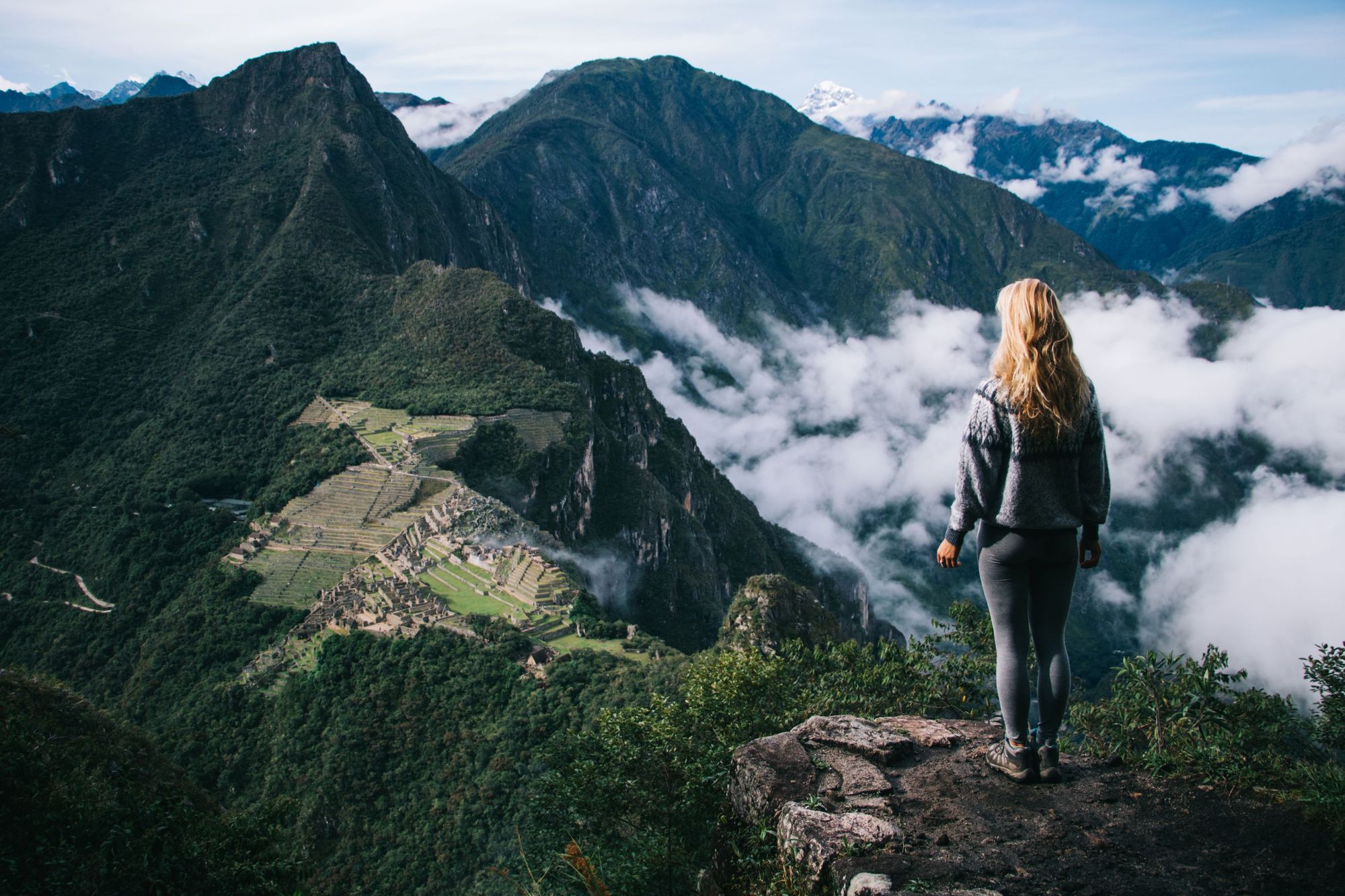The Salkantay trek is a 46-mile (74km) hiking route leading to Aguas Calientes, and subsequently on to the legendary Machu Picchu. The route is generally a cheaper and more challenging trek than the traditional Inca Trail, with the main difference being that the Salkantay trek runs roughly 20 miles longer, takes in a wider variety of terrain on the route - and has a substantially lower tourist footfall.
Although it runs through completely different areas, the Salkantay Trek is considered by many locals and visitors to be even more scenic than the Inca Trail - weaving through a vast variety of terrain, from snowy mountain valleys, glimmering lakes and jungles to other ancient Inca sites.
The Salkantay Trek is considered by many locals and visitors to be even more scenic than the Inca Trail
Starting from the small town of Mollepata, roughly 100 miles from Cusco, the Salkantay trek takes budding hikers past Humantay Lake and through the stunning Humantay Mountains. It climbs to the Salkantay Pass, which is the high point of the route at 4,630m (15,190ft), and later reaches coffee plantations and another famous Inca site, Llactapata. The route finishes at Aguas Calientes, from where Machu Picchu is easily accessible - with hikers then heading on to the famous mountain citadel the next day.
Here’s everything you need to know about the Salkantay trek to Machu Picchu.
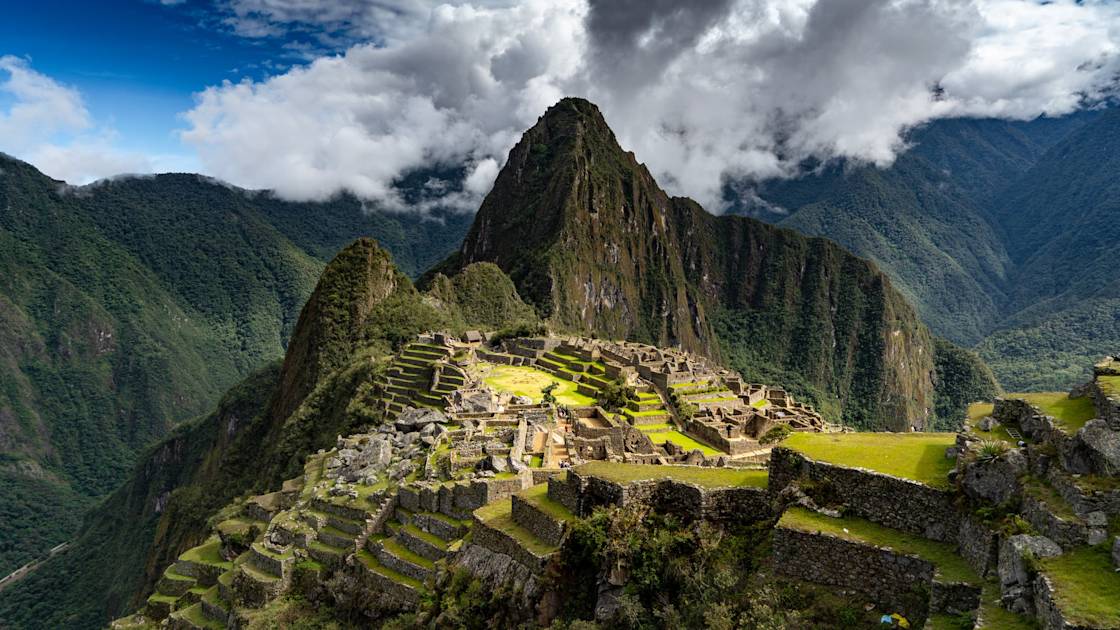
Why Choose the Salkantay Trek Over the Inca Trail?
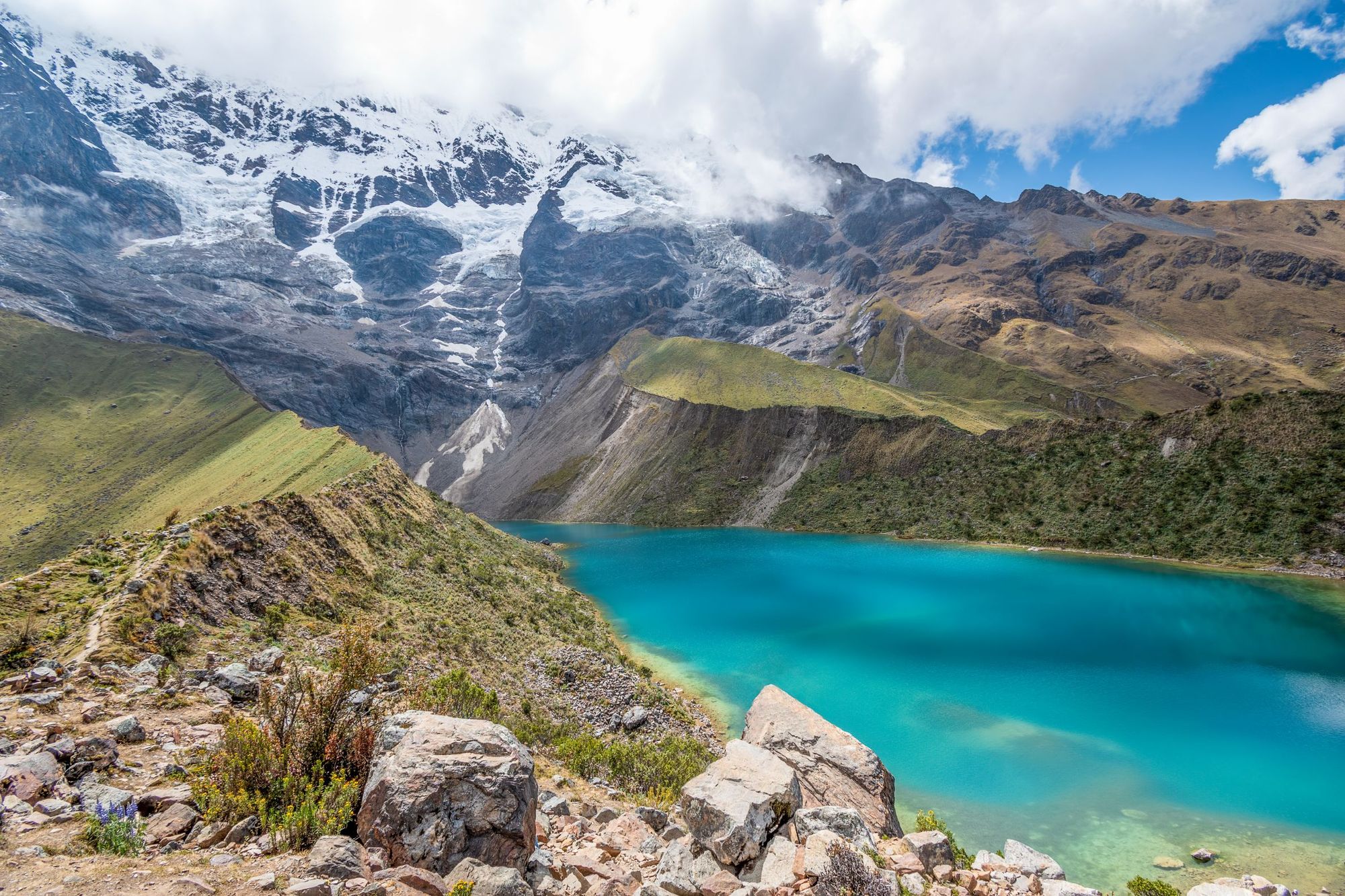
There's an obvious beauty to the Inca Trail, following the Qhapaq Ñan (Royal Road) to the Sun Gate, an exclusive door into Machu Picchu, but the route also has its flaws - namely, it's busy and it's expensive. This is because you need to pay for a permit (to reduce overcrowding, numbers are limited to 500 per day, including all support staff and guides).

In contrast, the Salkantay Trek does not require permits, meaning more flexibility when booking and a reduced cost. It sees an average of 50 hikers per day. It's no surprise that many more intrepid hikers are now turning their heads to the lesser known Salkantay trail.
Read More: Salkantay Trek vs. Inca Trail: Which is the Best Route to Machu Picchu?
The Basics
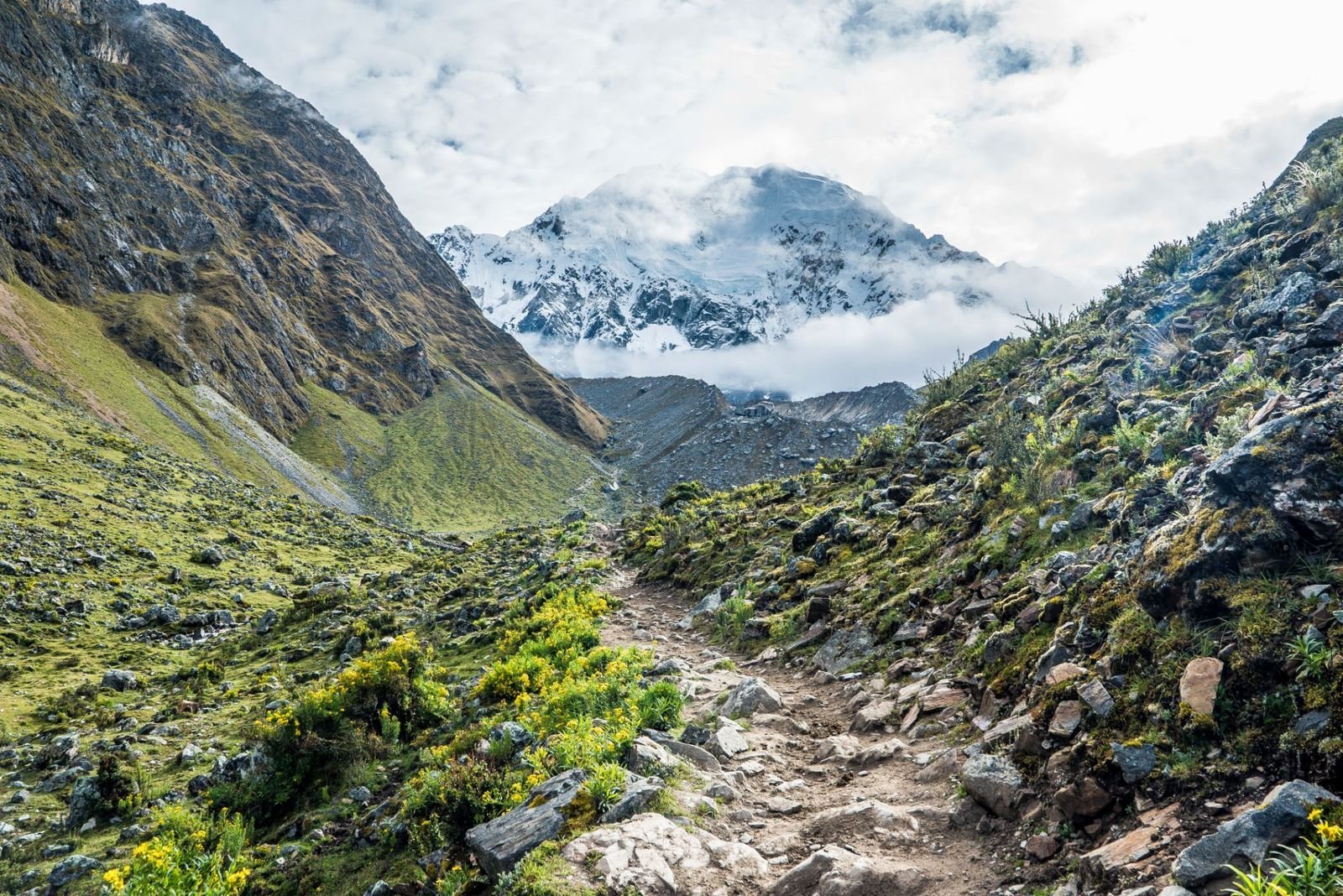
Salkantay Trek Distance
The Salkantay Trek covers approximately 74 kilometers (46 miles) over four to five days. The route begins at Mollepata and passes through diverse landscapes before reaching Aguas Calientes, a town close to Machu Picchu.
Salkantay Trek Highest Point
The highest point of the Salkantay Trek is the Salkantay Pass at 4,650m (15,255 ft) above sea level. This point offers stunning views of the Salkantay Mountain and marks the most challenging section of the trek before descending into lower altitudes.
Salkantay Trek Difficulty
The Salkantay Trek is considered a challenging hike due to its high altitude, steep ascents, and varied terrain. It reaches a maximum altitude of 4,650m (15,255 ft) at Salkantay Pass, requiring the necessary acclimatization to avoid altitude sickness. However, it is doable for experienced hikers with a good level of physical fitness.
Salkantay Trek: A Five-Day Route to Machu Picchu
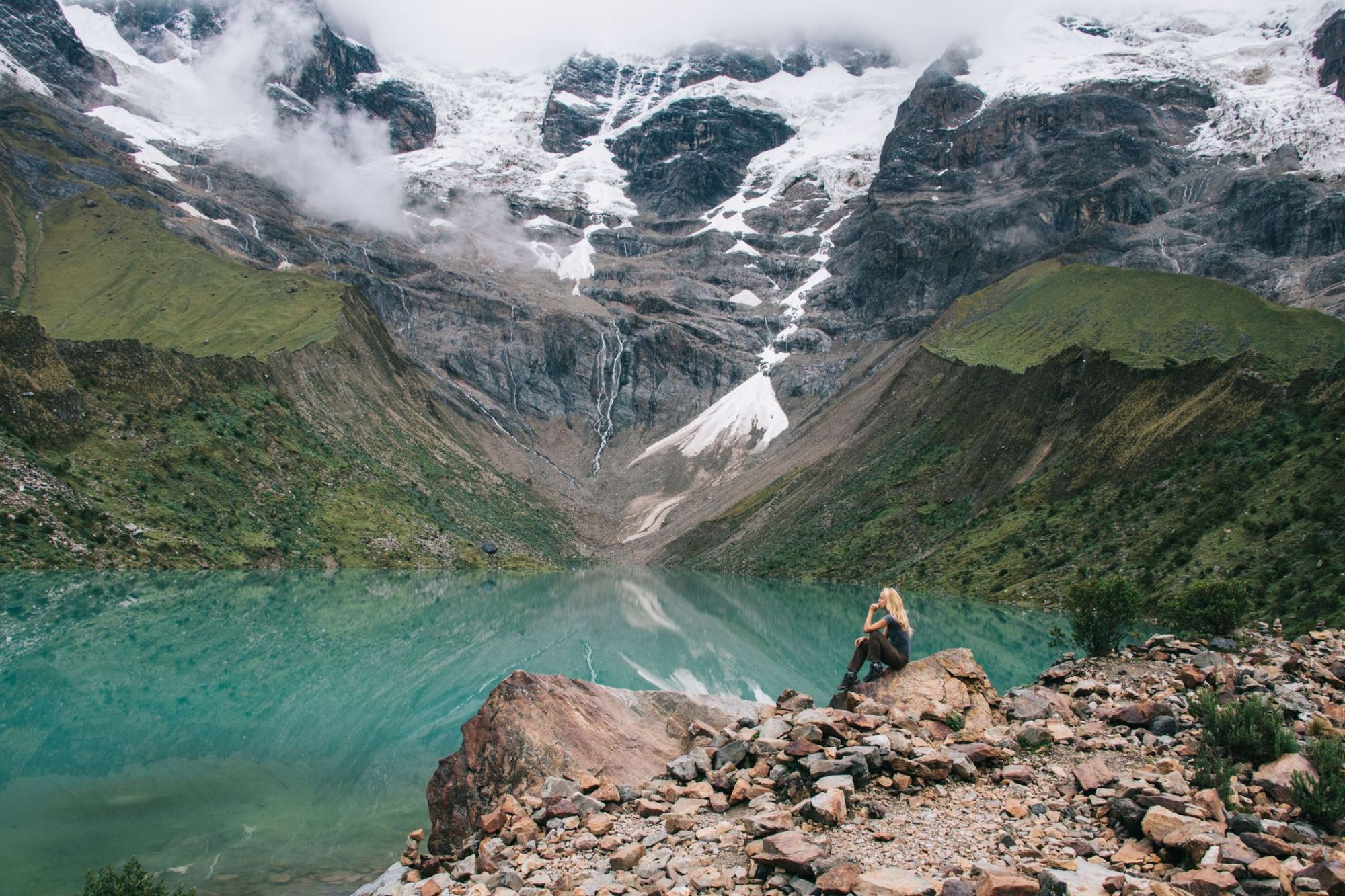
Some walk the Salkantay trek in four days, while others do it in five. Here, we’re going to provide an example of what a five-day itinerary might look like on the Salkantay trek, with the first four days taking you from Mollepata to Aguas Calientes, and the fifth day taking you on to Machu Picchu itself.
Day 1: Mollepata to Soyrococha
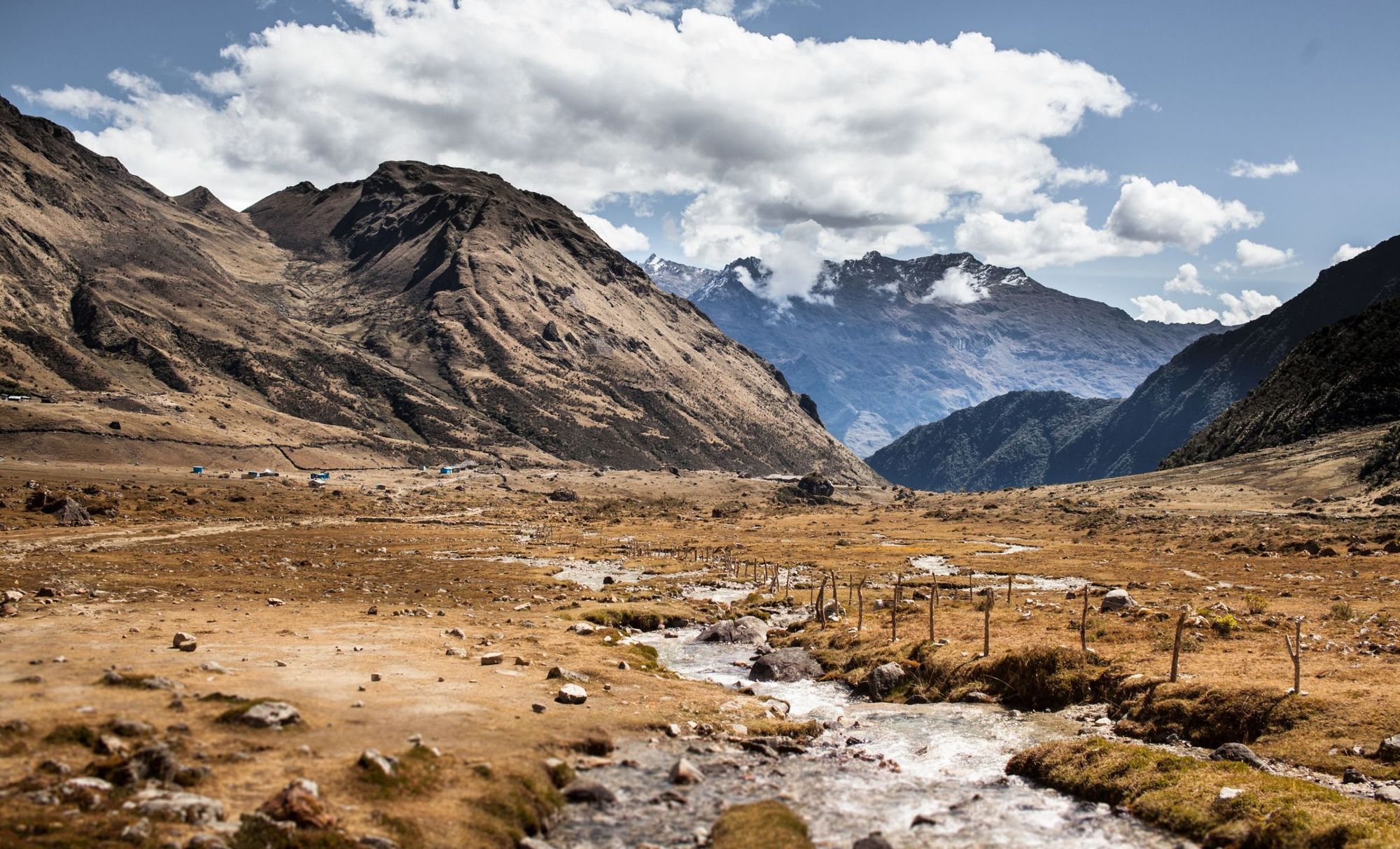
- Distance: 5 miles (8.2km)
- Hike time: 6-8 hours
Start your trek at Soraypampa, near Mollepata, at an altitude of 3,800m (12,467ft). The highlight of today is not heading into the mountains, not getting your first glimpse of the Salkantay and Humantay Mountains on the way - as beautiful as that may be. Rather, the highlight is arriving at the remarkable Humantay Lake, which reflects back the Humantay Glacier, which sits above it. This night is often spent camping at Soyrococha, around 4,400m (14,435ft) up, with the mountains behind.

Day 2: Soyrococha to Colpapampa
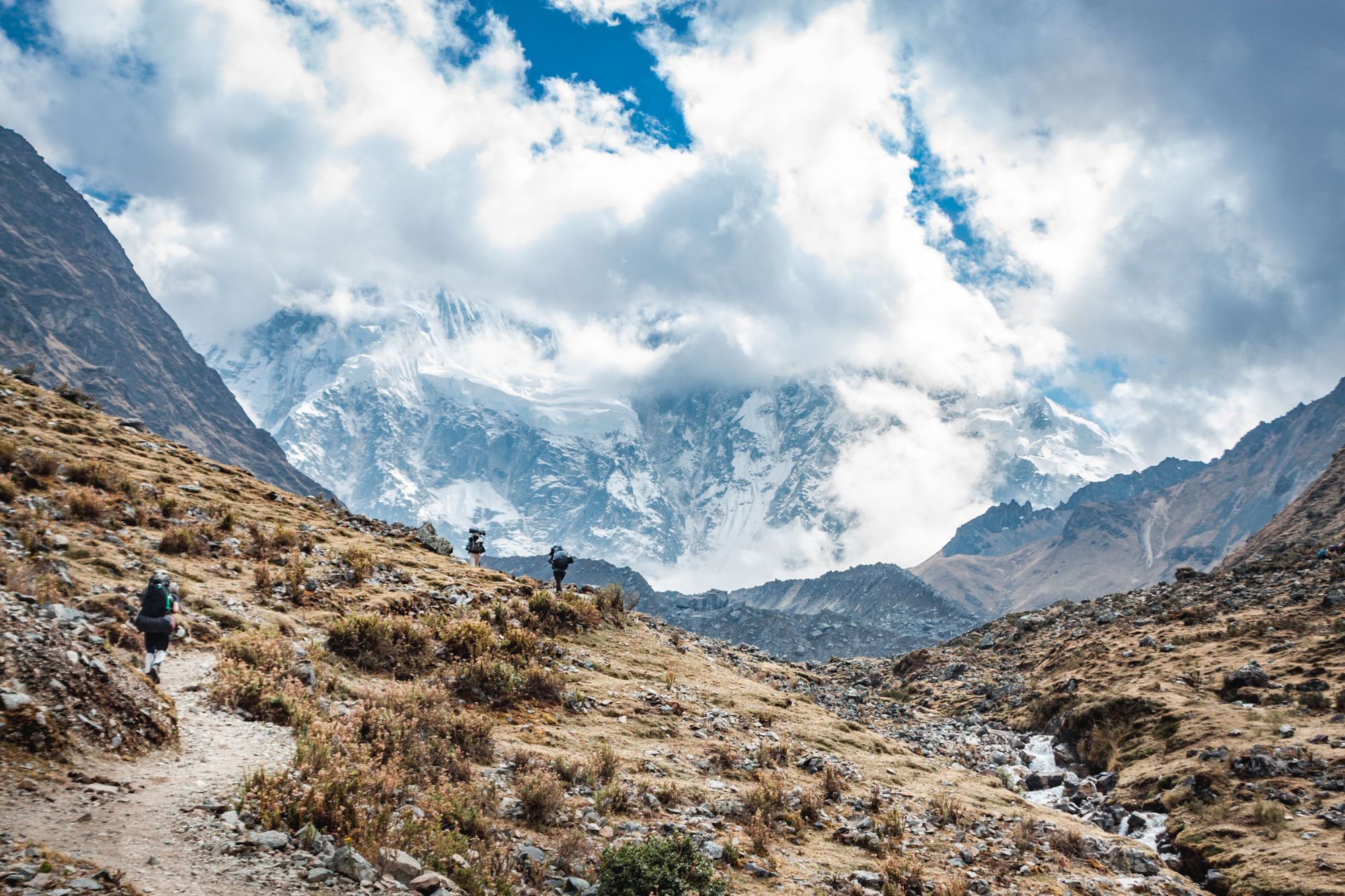
- Distance: 9.5 miles (15.3km)
- Hike time: 8-9 hours
This is typically considered to be the toughest day on the Salkantay trek. It’ll take you up to the high point, the Salkantay Pass, at 4,630m (15,190ft), and there you can make an offering to the Apus, the Gods of the mountain, which, in the native Quechua tongue, means ‘Savage Mountain’. It’s in the Vilcabamba mountain range - and at 6,271m (20,574ft) high is one of the most spectacular mountains in the Andes.
Day 3: Colpapampa to Lucmabamba Coffee Plantation
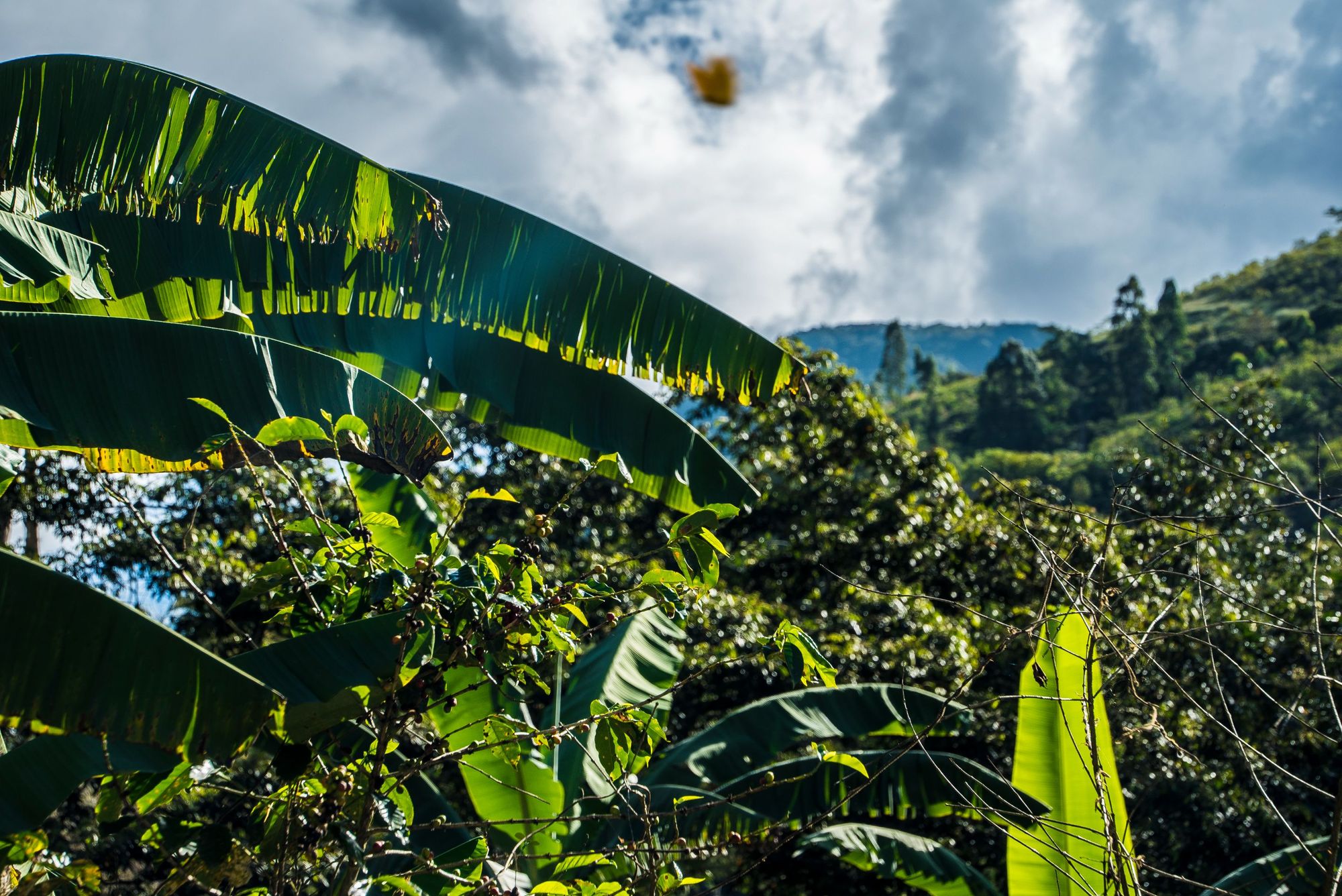
- Distance: 9.6 miles (15.5km)
- Hike time: 5-6 hours
After a big day on the mountain yesterday, the third day on the Salkantay trek tends to be easier. You’ll walk through the rainforest and along the Santa Teresa River, passing some mighty waterfalls on the way. You'll also briefly nip onto the Inca Trail, climbing an ancient staircase. The camping spot, at Lucmabamba, is particularly interesting. You can pick your own beans to grind and roast, too, meaning that deep in this lush jungle, you may just find yourself drinking the best cup of coffee you’ve ever had.
Day 4: Lucmabamba Coffee Plantation to Aguas Calientes
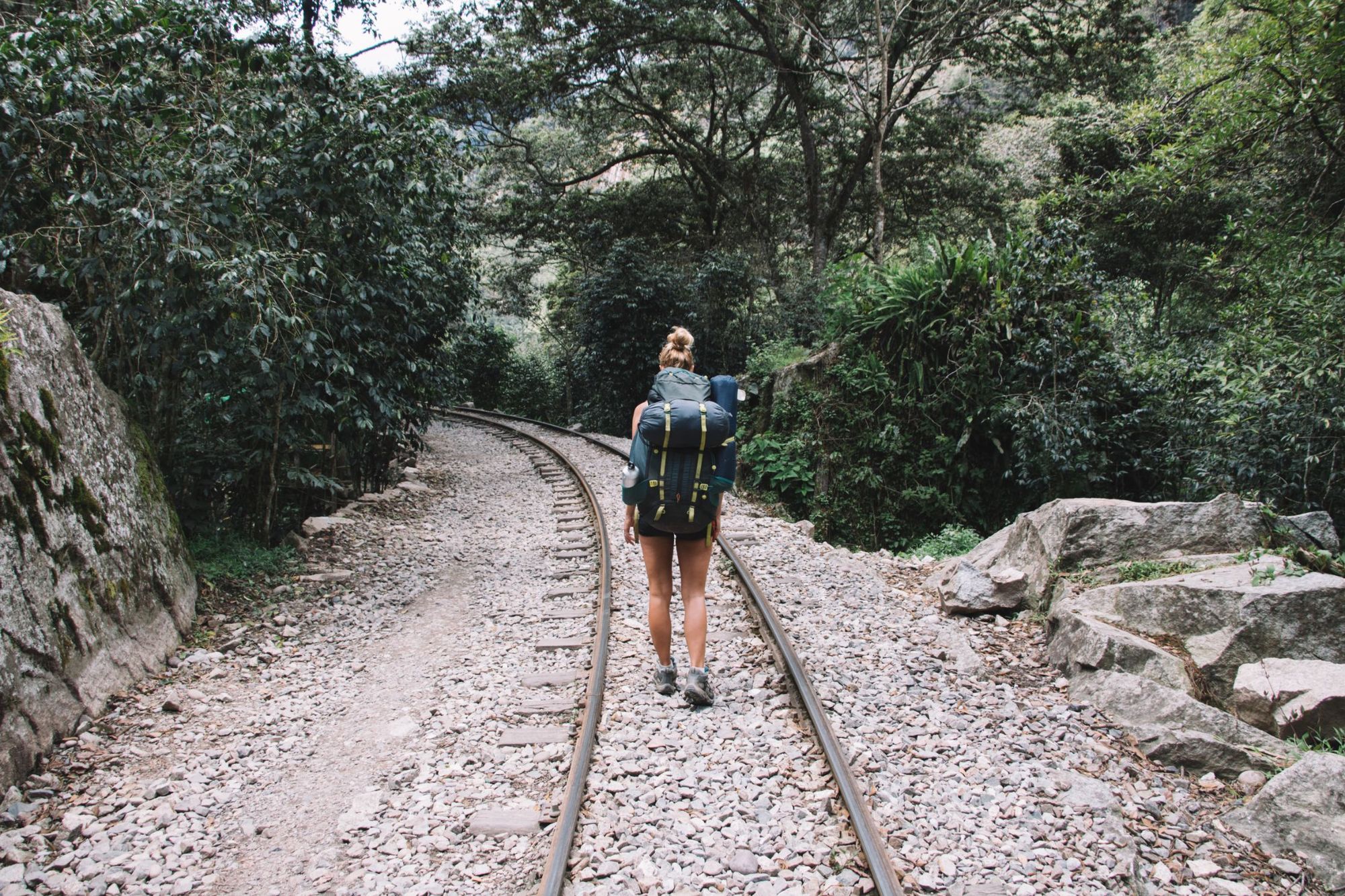
- Distance: 9.5 miles (15.3km)
- Hike time: 8-9 hours
Before you complete the circuit of the Salkantay trail, you’ll visit Llactapata, another Inca site of historical significance - and around then, you’ll get your first view of Machu Picchu, across the valley. There are some mighty fine suspension bridges on this route too.
From Llactapata, most tend to take a train to Aguas Calientes, where you'll be able to rest up in a hotel and dine in local restaurants. Others walk the 6.2 miles (10km), which takes around three hours, on the train line (though do be careful if you're doing this, as it is an active train line).
Day 5: Aguas Calientes to Machu Picchu
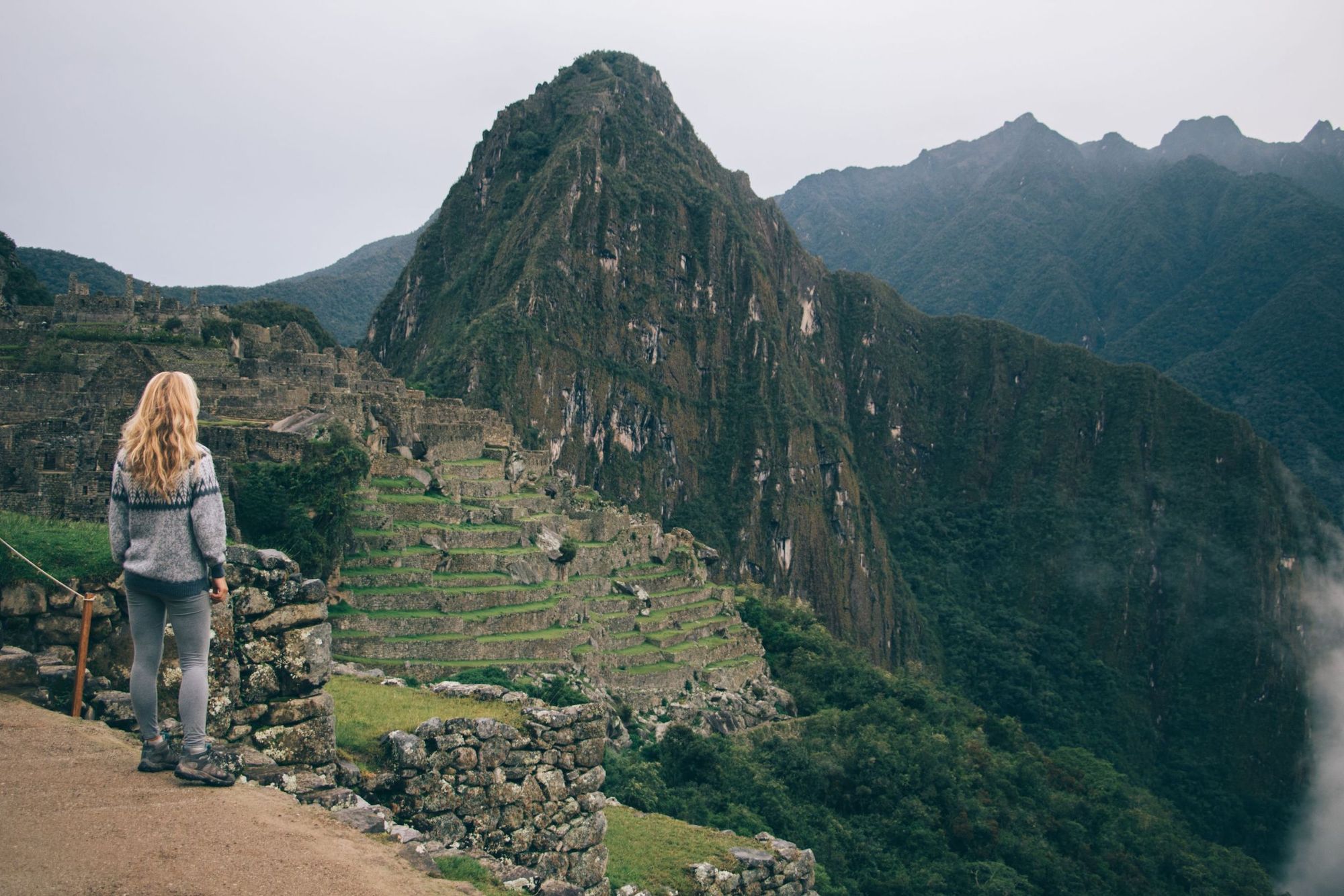
- Distance: 2.17 miles (3.5km)
- Hike time: 4 hours
Take the bus to Machu Picchu for a guided tour of one of the most stunning archaeological sites in the world. This stunning site is built between two fault lines, and was constructed by the great Inca rulers Pachacutec Inca Yupanqui (1438–1471) and Túpac Inca Yupanqui (1472–1493) inhabited from around 1420 to 1530AD. Afterwards, it’s back to Aguas Calientes, and then on to Cusco via expedition train - no doubt with a fair few lifelong memories in the bag.
What to Pack for Hiking the Salkantay Trek to Machu Picchu
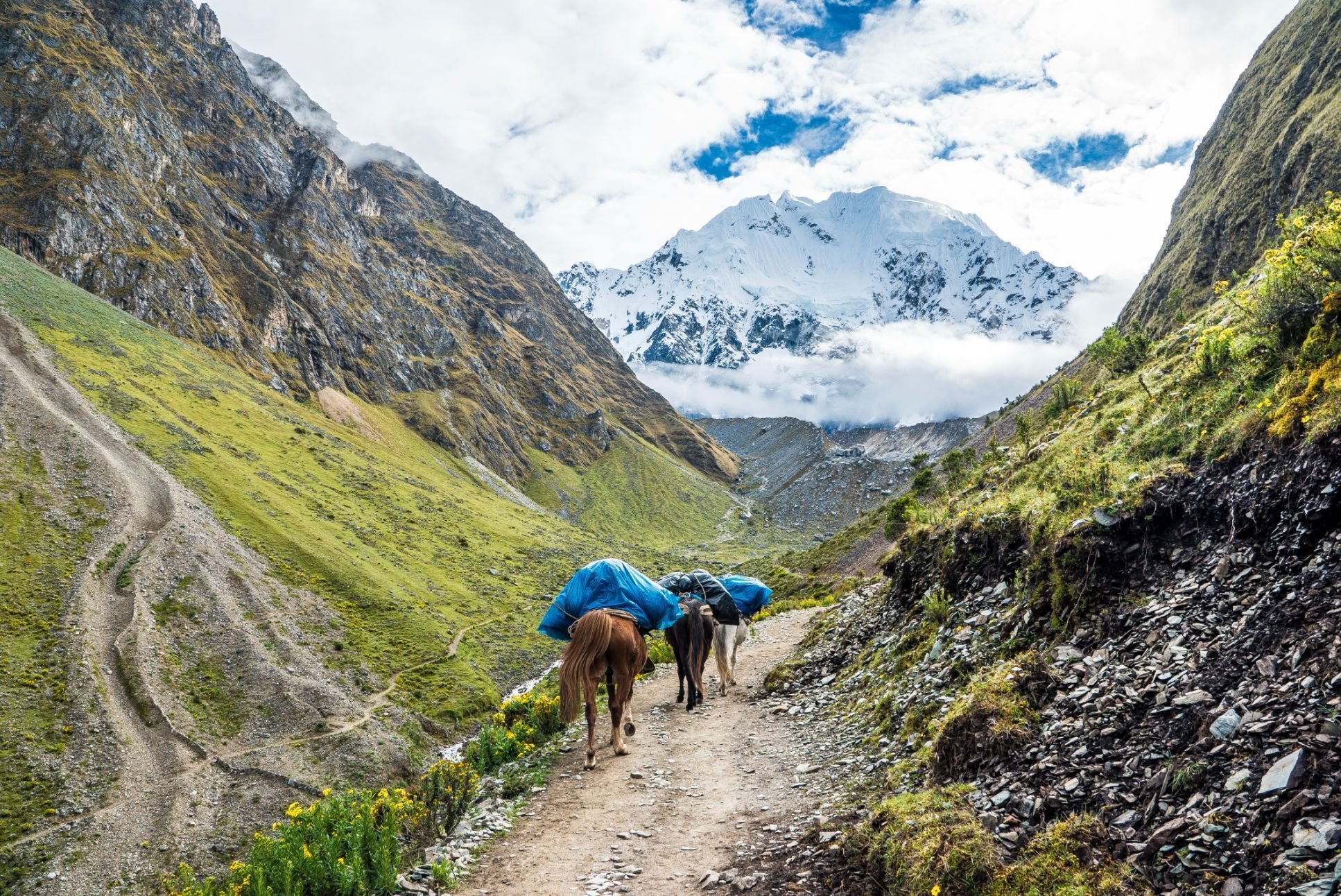
Here, we have provided a comprehensive list of what to pack on the Salkantay trek in Peru. It’s likely that your guide will bring oxygen bottles and first aid kits. They may also provide tents and inflatable mattresses, so do seek clarification before leaving.
Clothing & Gear:
- Waterproof hiking boots
- Moisture-wicking base layers
- Lightweight hiking pants
- Insulating fleece or down jacket
- Waterproof jacket and pants
- Winter gloves, beanie, sun hat
- Hiking socks (merino wool recommended)
- Trekking poles (highly recommended)
- Sleeping bag (suitable for -10°C)
- Headlamp with extra batteries
Other Essentials:
- Backpack (25-35L)
- Sunscreen (SPF 35+ recommended)
- Insect repellent
- Reusable water bottle or hydration system
- First aid kit
- Toiletries & wet wipes
- Cash (for snacks, tips, and emergencies)
When is the best time to hike the Salkantay Trek?
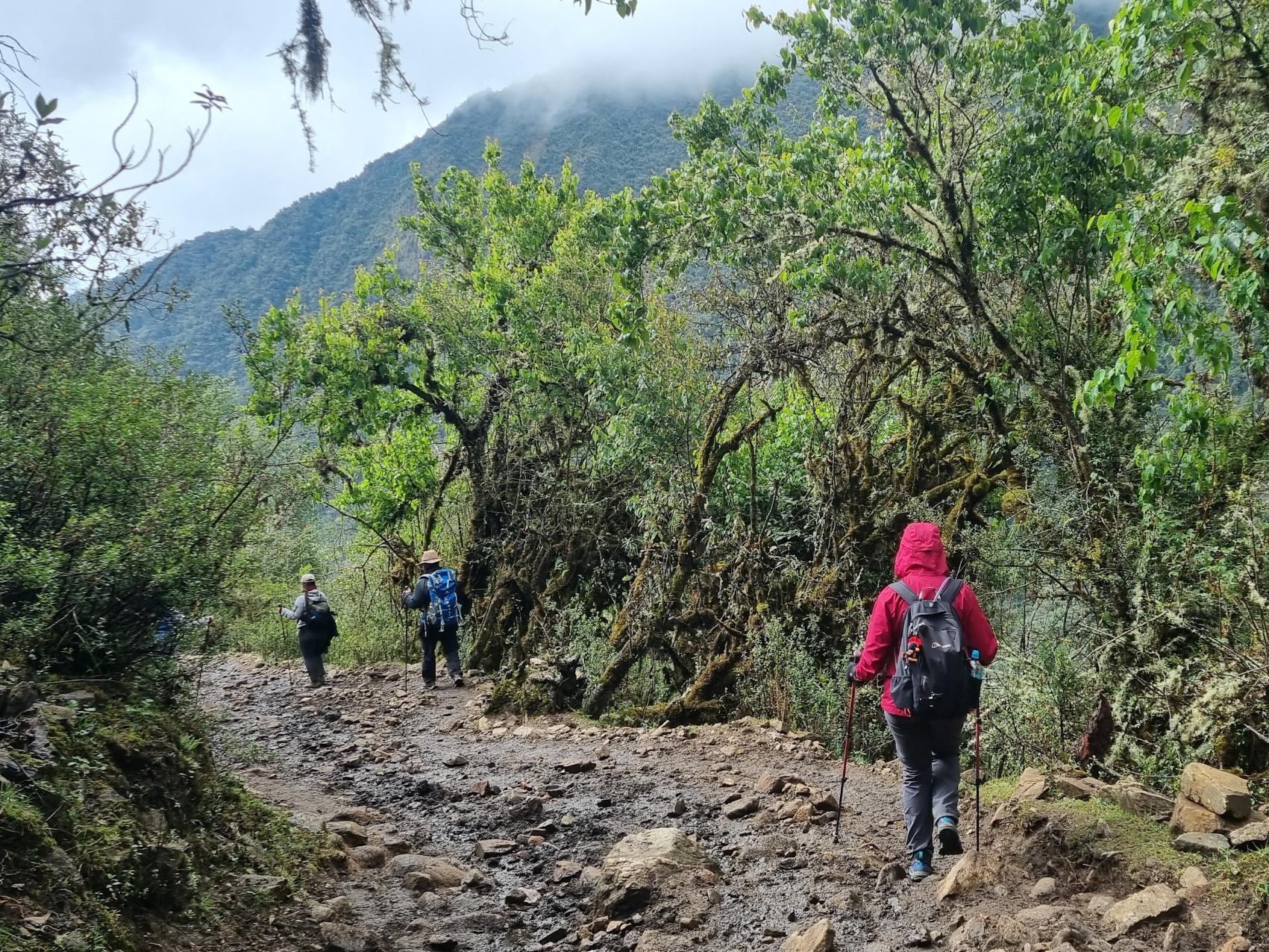
The best time to walk the Salkantay trek to Machu Picchu is between April and November. This is the dry season in Cusco.
June and September are the most popular months to hike the Salkantay trek (largely due to European and US holidays), but May and October tend to offer the best of the weather, with warm but not roasting sunshine.
The beauty of the Salkantay Trek is that it’s never too busy, so you’re not forced onto the shoulder season for the best timing.
How to prepare for the Salkantay Trek
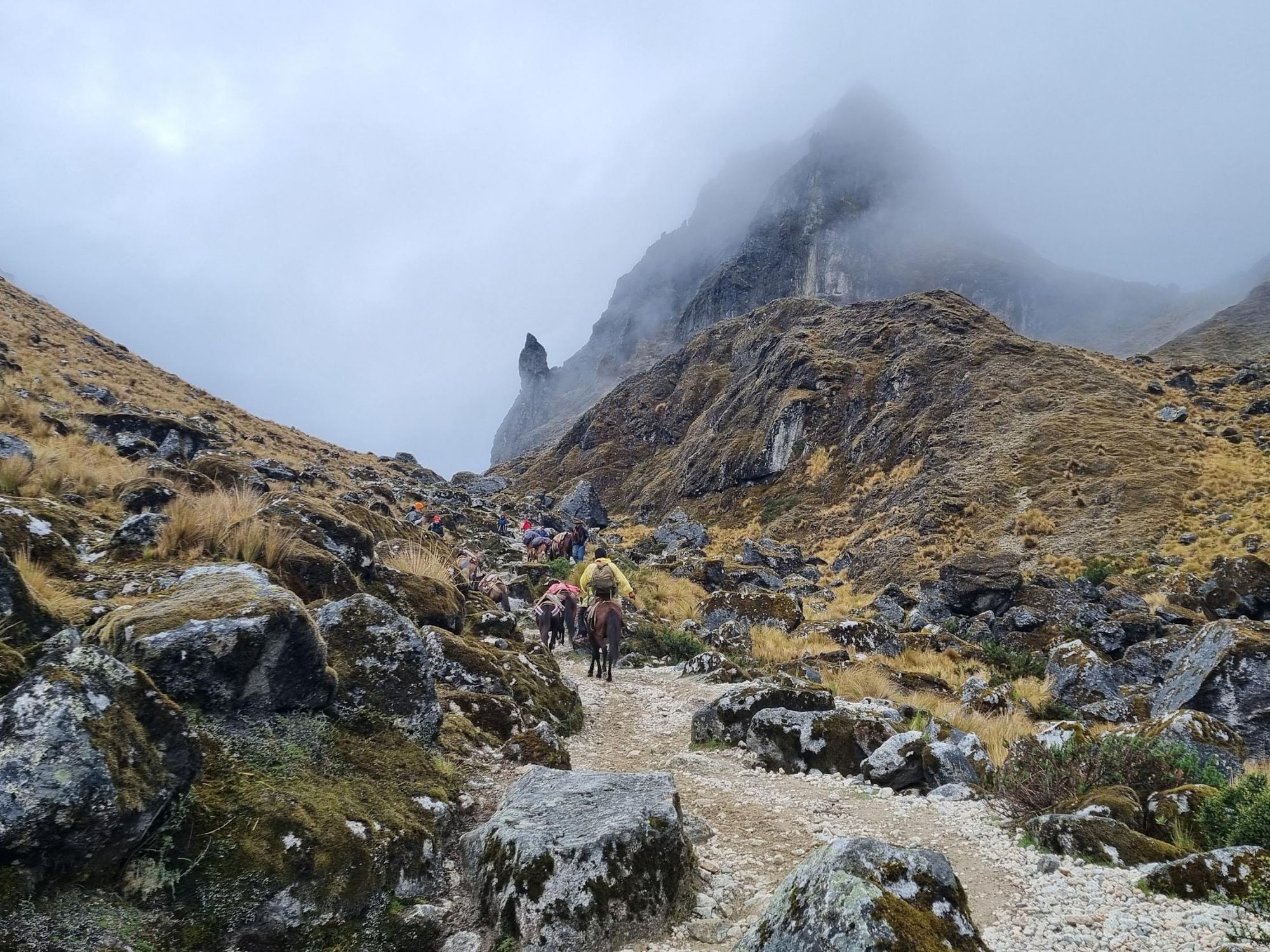
Prepare for the Salkantay Trek by training for endurance; focus on cardiovascular exercises, strength training, and hiking practice. Arrive in Cusco at least 2-3 days before trekking to adjust to the altitude. Pack warm clothing, sturdy boots, and proper hydration supplies.
Our guide on Training for a Multi Day Hike will help you prepare for your Salkantay trek!
Read More:
- 5 of the Best Hikes in Peru (That Aren't the Inca Trail)
- Hike Machu Picchu: Which Route Should You Choose?
- A Guide to the Sacred Valley of the Incas in Peru
Inspired? Check out our Trek the Salkantay Route to Machu Picchu Adventure, and our other trips to Machu Picchu now!


